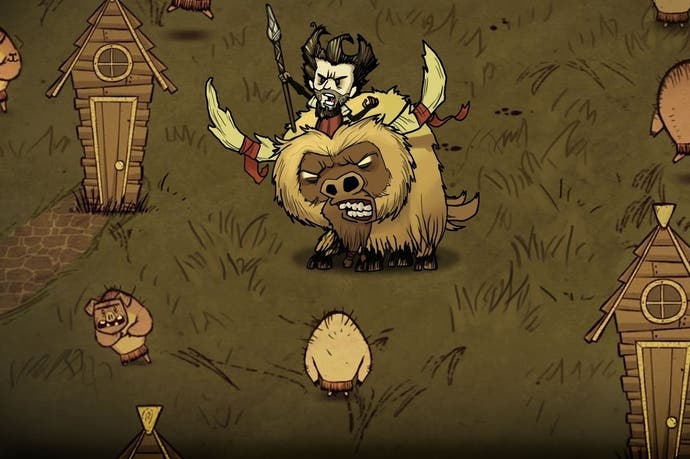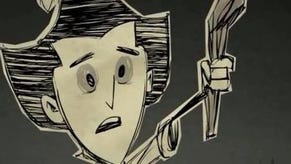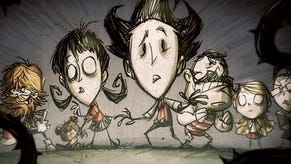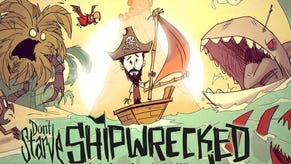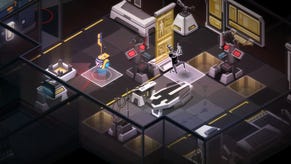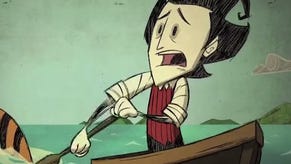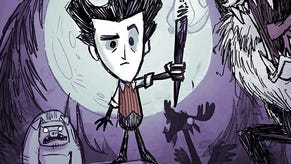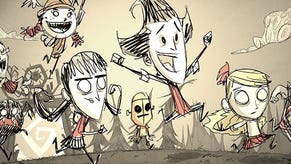Where Lovecraft and Minecraft meet
Welcome to Don't Starve, Klei's brilliant new game of survival and exploration.
When you're terrified of the dark, a forest fire has a beauty. When you're surrounded by an inferno and the night is lit up with an aggressive combustion, rampaging through your carefully planted wall of trees, you almost feel safe, comforted by the warmth and this blazing warning to all the things that go bump in the night.
I burned down my settlement in my first game of Don't Starve. I planted one too many trees close to my campfire, and when I stoked it, throwing a few more logs into the flames, one of them decided to take a destructive holiday through what I'd started to refer to as 'The Compound Walls'. They burned big, they burned bright, and they burned quickly. I went from an apocalyptic brightness to the morbid dead of night in a few seconds. The potential fuel that had surrounded me was now just so much charcoal.
It's a good thing charcoal burns twice as good as normal logs, then. The next morning was harvesting my accidental supplies, before cutting down a whole load of trees to replant my safety net. Don't Starve is the title of the game, but the real imperative is 'Don't Accidentally Get Yourself Killed'.
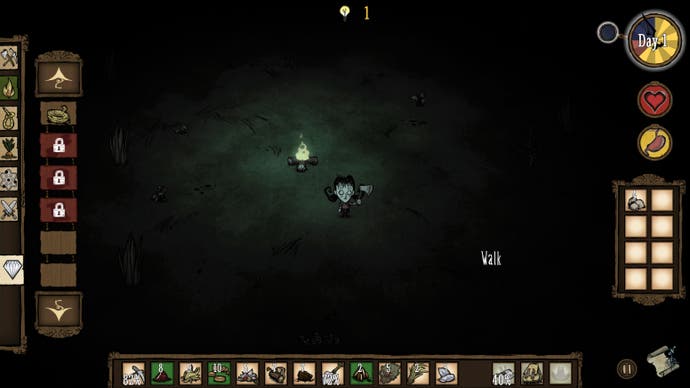
Following Shank and Mark of the Ninja, Don't Starve is a bit of a departure for Klei Entertainment. Taking up the mantle of attempting to occupy the same mental space as Minecraft, Don't Starve is an isometric survival sim twisted and turned with all sorts of Lovecraftian and Grimm influences, where you're only safe as long as your curiosity doesn't get the better of you. But you play games; curiosity is kind of your bag.
Tentacles rise out of mottled ground, and you quickly learn to give such sickly terrain a wide berth. The odd village full of pig men provide welcome respite from the aggressive world, provided you don't try to take an axe to their king. They'll even oblige you with some manure, if you supply them with plant matter to digest. Bees amble around, as bees do, but stray too close to their hive and they'll pursue you for hours.
But if you wander away from the light in the darkness, you're doomed. Things are out there. Things that like the dark, and will bite and tear at you if they get half a chance. So you cower by your campfire, desperately throwing on extra logs because you don't, not for one second, want to let it die down. You think about all the things you'll do the next day, and you try not to think of the things that would like to spend that time pulling bits of you from their canines while they hide away until nightfall.
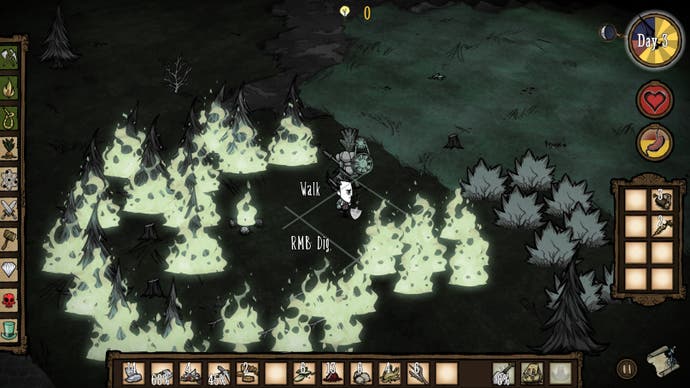
It'd be easy to dismiss Don't Starve as flying too close to the Minecraft model, but both the perspective and the focus are far enough away that it doesn't feel like it's aping anything. The Science Machine gives a weird investigative tone to Don't Starve, making you feel more like an eclectic millionaire and less a stranded survivor. It's Klei's way of gating the more powerful items in the game by requiring you to 'research' supplies and then spend science points to unlock new technology. All things considered, it does make charging at foot high spiders with nothing but an axe and a few days of stubble somewhat more believable.
Despite an imminent release date of late March, there's still a long way to go before Don't Starve is where Klei wants it to be. The first week or so of game time is brilliantly fleshed out, while you set up your base of operations and properly explore the world, but as you die and come back with the same accumulated knowledge, and the same technology unlocked, things start to slow down some. There are plans to introduce a hefty end game, with all sorts of emergent events, but for now they're still being worked on. Regardless, by the time it's ready for release, Don't Starve should be another brilliant indie game that will politely take up dozens of hours of your time.
